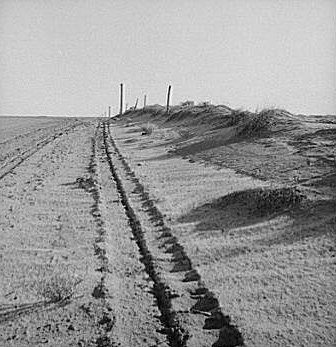
In North Dakota, several counties are giving up on trying to keep the roads in halfway-decent shape. So they’re grinding up the asphalt on some roads and going back to the old days — gravel, the Wall Street Journal reports.
“A lot of these roads have just deteriorated to the point that they have no other choice than to turn them back to gravel,” Larry Galehouse, director of the National Center for Pavement Preservation at Michigan State University told the paper. “We’re leaving an awful legacy for future generations.”
The problem is one you’ve probably heard of. Governments are cash-strapped, the cost of oil-based products is skyrocketing, and taxpayers are reluctant to increase their taxes, which doesn’t keep several of them from being mighty upset about a return to dusty drives.
But gravel may not be the answer, either.
A 2005-2009 study from the Minnesota Department of Transportation found that in rural Minnesota counties, the cost of keeping up a gravel road is considerable — $4,160 per year per mile, after an initial $13,000 per mile cost. The cost of building an asphalt road is $130,000 per mile, but it can be maintained for $2,460 per mile per year after that.
After that, it becomes a six-of-one, half-dozen-of-the-other situation. It costs more to plow a paved road than a gravel road in the winter. The dust from a gravel road can cause health problems and increased maintenance costs for homeowners. A paved road is safer. Drivers slow down on gravel roads. Property values go up along paved roads.
“Upgrading a gravel road to an (asphalt) surface should be considered an investment that will primarily reap rewards that do not result in a monetary savings to the government agency,” the report said.
That’s an attitude that’s almost as quaint as chip in the windshield.
